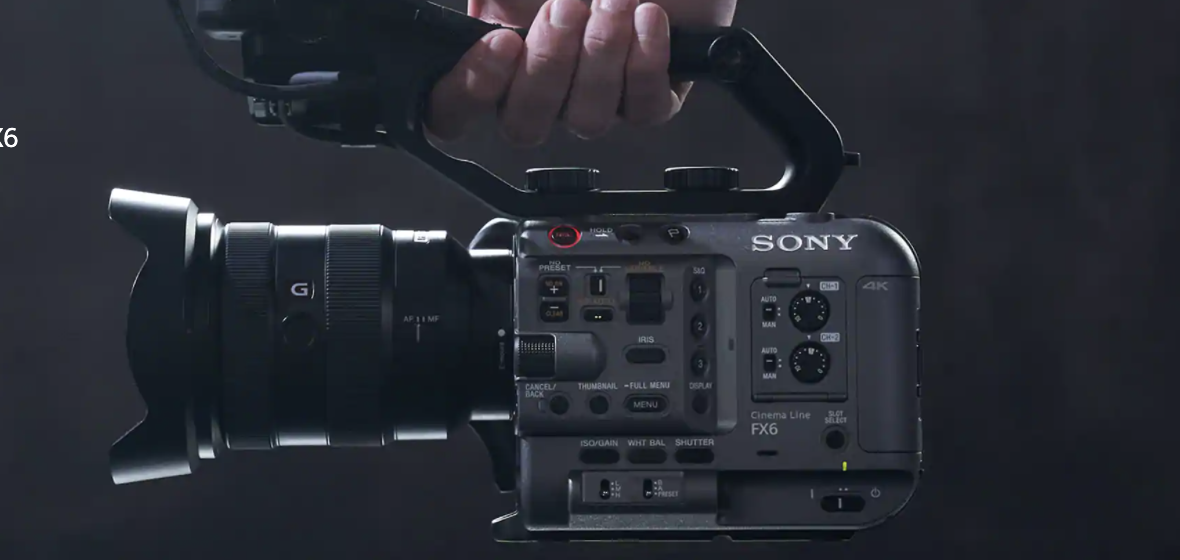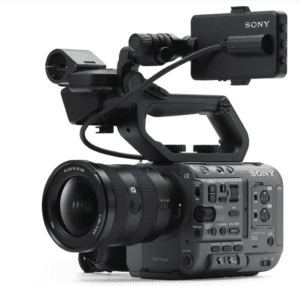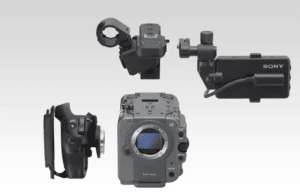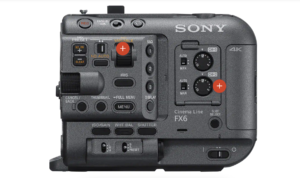
Gear Breakdown: Sony FX6 Cinema Camera
Here at Foundation Digital Media, we are constantly searching for the best technologies available and comparing gear breakdowns to deliver our customer’s the highest quality product for their budget. We’d like to begin passing these evaluations on to you, our customers, and to our colleagues in Washington D.C. video production and elsewhere. We’d love to help elevate your next project to a professional video standard, but we hope these breakdowns will provide you with the tools to get started today in developing your own incredible video content.
Today we’re taking a look at a gear breakdown of the new Sony FX6 Digital Cinema Line Camera. With this camera, Sony has attempted to make a lighter, more compact full-frame camera with better performance and a competitive price point to its rivals. Starting at $5,999 for the base model, it’s strikingly familiar to other cameras in its class, but is it worth the money?

Let’s Look At The Specs
According to the official press release from Sony, the FX6 is the latest edition to Sony’s Cinema Line of cameras that are built to “have a filmic look, cultivated from Sony’s long experience in digital cinema production” and also “enhanced operability and reliability that responds to the wide variety of creator’s high demands.”
This latest iteration features a 10.2 MP full-frame back-illuminated Exmor R™ CMOS sensor, much like recent sensors from Sony’s Alpha series cameras. The sensor can achieve up to 15 stops of dynamic range “with high sensitivity and low noise”, according to Sony.
The FX6’s base sensitivity is ISO 800 with an “enhanced sensitivity setting” of ISO 12,800 or expandable up to 409,600 for shooting in low and very low light conditions. It is capable of recording in “XAVC All Intra 4:2:2 10-bit depth in DCI 4K (4096 x 2160 – up to 60p), QFHD 4K (3840 x 2160 – up to 120pvii) and FHD (1920×1080 – up to 240p)” for slow-motion videography.

Also much like the Alpha series, this camera possesses a BIONZ XR™ image processing engine, first used in the new Sony Alpha 7S III camera, providing up to four times faster processing performance compared to cameras like Sony’s own FS5 II. This engine allows for advanced cinematic color science including S-CinetoneTM for “richer tonal reproduction right out of the box as well as S-Log3, S-Gamut3, and S-Gamut3.Cine for post-production flexibility.”
With the back-illuminated sensor’s unique functionality, there is both Fast Hybrid AF by combining “627-point focal plane phase-detection AF with advanced Face Detection” and Real-time Eye AF in high frame rates with continuous AF, allowing camera operators to “effortlessly and precisely track fast-moving subjects in slow motion without losing focus.”
One interesting feature within the FX6 is the new internal electronic variable ND filters for “easy and seamless control of the camera’s filter density.” Users can set variable ND to auto or adjust the filter density manually in increments from 1/4 to 1/128 for greater control of image exposure in any lighting condition.
How It’s Built
Built with a durable magnesium alloy chassis, the FX6 body measures “4.6 inches x 6 inches x 4.5 inches” and weighs just 1.96 pounds. The chassis also features a heat-dissipating structure to keep the camera’s components within their normal operating ranges to prevent overheating, even during extended recording times.
The minimal build also features a modular design allowing users to easily pair accessories, among which you can purchase as part of a pricier kit with the body or separately later on.

Another unique characteristic of the FX6’s body is its 3.5-inch LCD Viewfinder. This one can be attached on “multiple locations of the camera body for added freedom and easy menu control with touch operation.” Speaking of interface, there is a quick access control menu for commonly needed features including “Codec, Imager Scan Mode, Picture Size and Frequency, Base ISO and Sensitivity, Shooting Mode and Audio Levels.”
For storage, there are two media slots compatible with CFexpress Type A cards for higher overall capacity and faster read and write speeds in addition to SDXC UHS-II/UHS-I cards.
Conclusions
If this exciting product seems appealing for your next video content or digital media project, you can find it available for purchase now on websites like B&H Photo/Video, though it is on back-order. If it seems beyond your needs or budget right now to invest in something like this, there are still resources for you! Get in touch with us now to discuss what our years of video broadcasting experience and technological expertise have to offer your next campaign or project.
